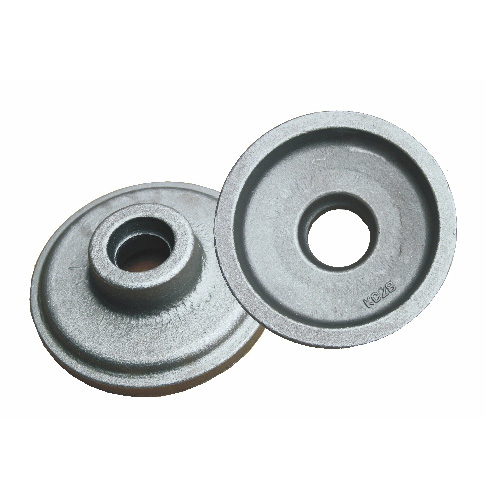Appearance quality of forgings and how to use steel?
2022-06-23
The shape and size of the forgings shall be in accordance with the forgings drawing. Machining allowance, tolerance and residual blocks specified on forging drawing shall be determined according to GB/T15826.1-1995 General Requirements for Machining allowance and Tolerance of Steel Free forging on hammer and GB/T12362-1990 Tolerance and Machining Allowance of Steel Die Forging standard.
Forgings with cracks, folding, forging, interlayer, scarring, slag and other defects, according to the following provisions.
Forgings that need machining are not allowed to be removed when the machining allowance is more than 50% after checking and confirming the defect depth, but the consent of the user is required.
Forgings that are no longer machined shall have a maximum depth of refitting not greater than the lower deviation of the size of the surface and shall be smooth.
When the surface defect depth of forgings exceeds the machining allowance, the user's consent must be obtained if repair welding is required. Repair welding shall be carried out according to appropriate repair welding procedures after defects are completely removed, and the quality of repair welding shall meet the requirements of users for forgings.
Whether the forging surface should be cleaned and the cleaning method shall be agreed upon by the user and the manufacturer when ordering.
The manufacturer shall ensure that the forgings are free of white spots. When white spots are found on a forgings, the whole batch of forgings with the same steel and heat treated in the same furnace shall be inspected for white spots one by one.
Forgings may be made directly from ingot, but the ingot shall be made of killed steel, the furnace number must be marked, and the inspection certificate must be attached. Forgings may be made from billets forged from rolled steel or steel ingot, which must have a certificate of conformity.
Forgings with cracks, folding, forging, interlayer, scarring, slag and other defects, according to the following provisions.
Forgings that need machining are not allowed to be removed when the machining allowance is more than 50% after checking and confirming the defect depth, but the consent of the user is required.
Forgings that are no longer machined shall have a maximum depth of refitting not greater than the lower deviation of the size of the surface and shall be smooth.
When the surface defect depth of forgings exceeds the machining allowance, the user's consent must be obtained if repair welding is required. Repair welding shall be carried out according to appropriate repair welding procedures after defects are completely removed, and the quality of repair welding shall meet the requirements of users for forgings.
Whether the forging surface should be cleaned and the cleaning method shall be agreed upon by the user and the manufacturer when ordering.
The manufacturer shall ensure that the forgings are free of white spots. When white spots are found on a forgings, the whole batch of forgings with the same steel and heat treated in the same furnace shall be inspected for white spots one by one.
Forgings may be made directly from ingot, but the ingot shall be made of killed steel, the furnace number must be marked, and the inspection certificate must be attached. Forgings may be made from billets forged from rolled steel or steel ingot, which must have a certificate of conformity.
The ingot, billet and steel without qualification certificates shall be re-inspected according to the relevant material standards and shall not be put into use until they are determined to be qualified. The manufacturing unit must produce the forgings according to the steel number specified by the customer's drawing. In case of substitution, the user's consent and written documents must be obtained.

X
We use cookies to offer you a better browsing experience, analyze site traffic and personalize content. By using this site, you agree to our use of cookies.
Privacy Policy



